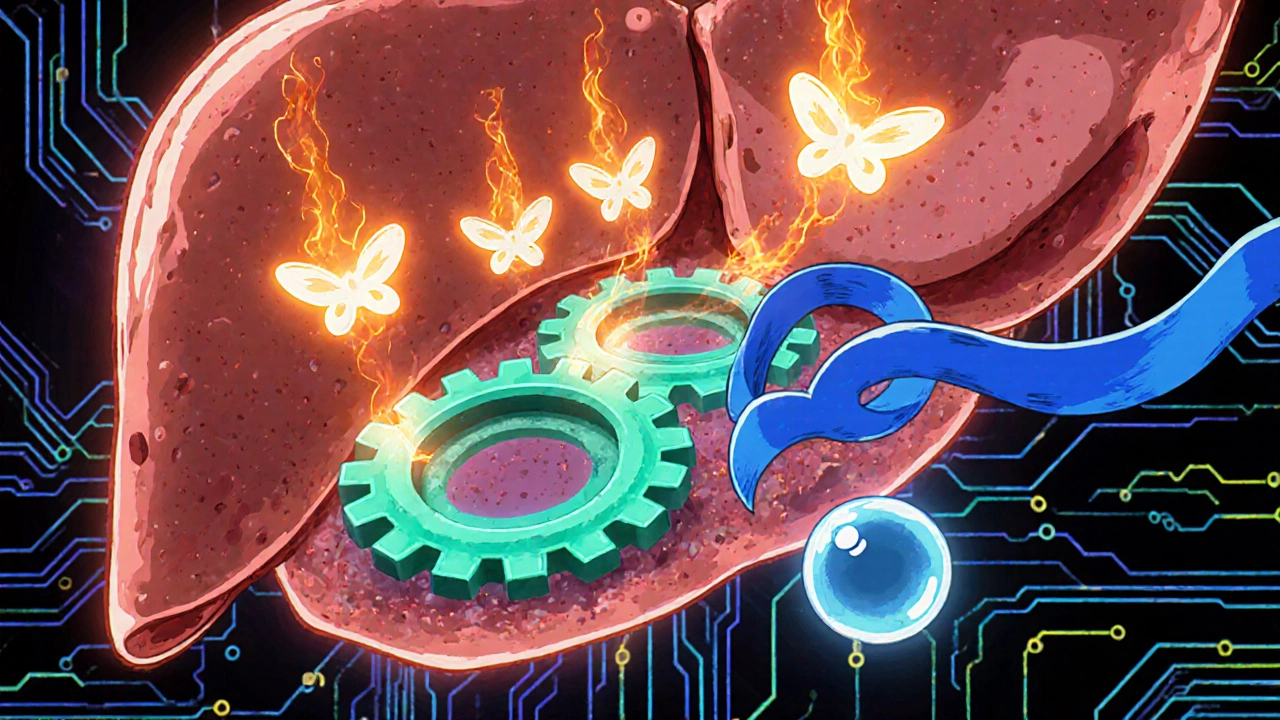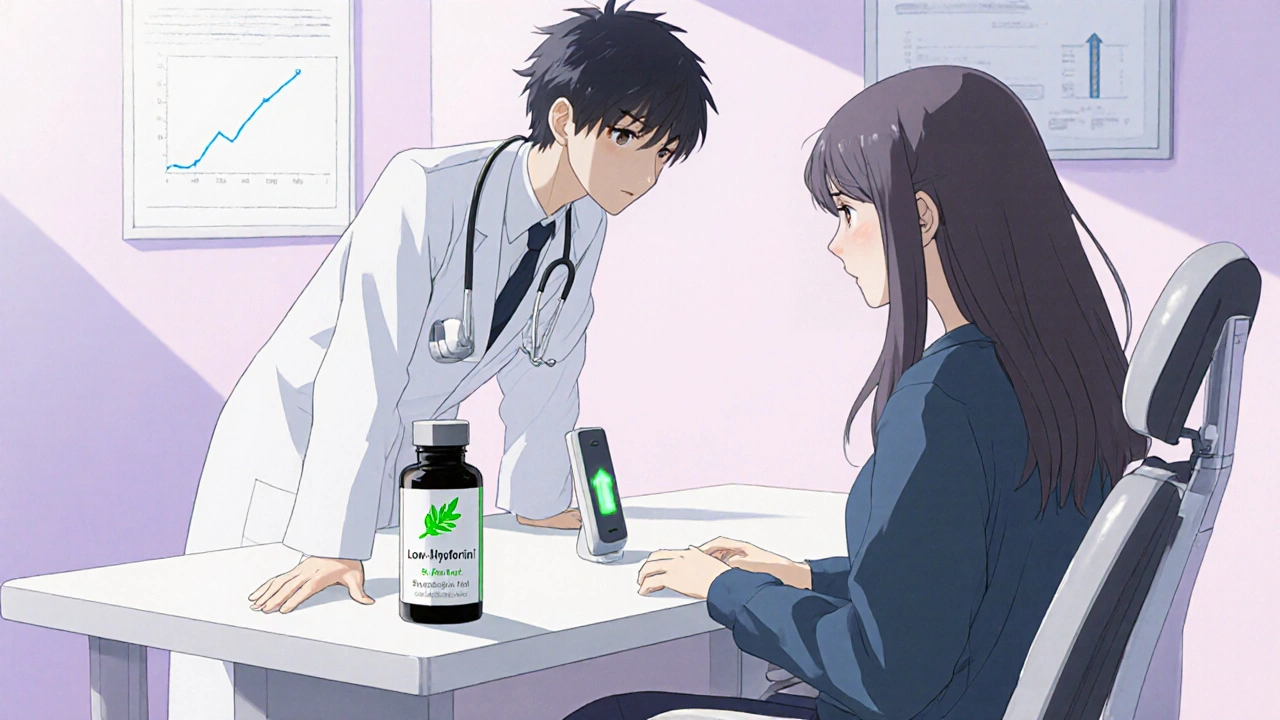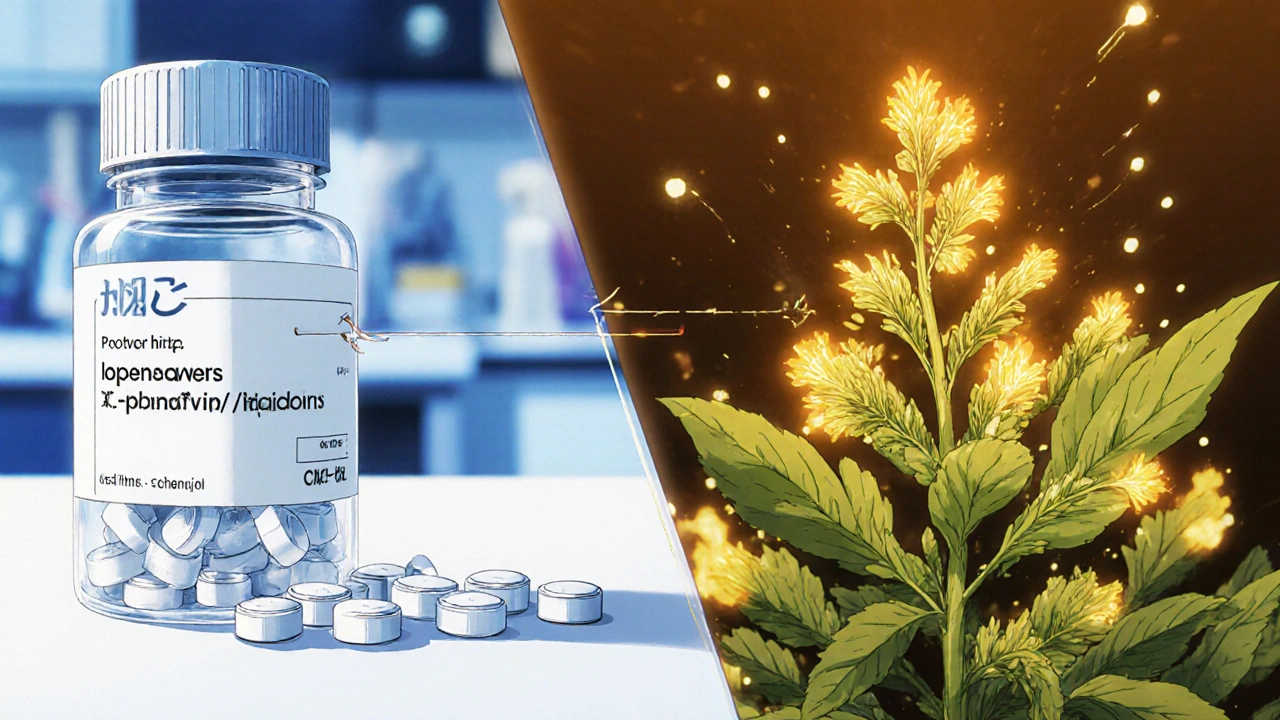When a person living with HIV adds an over‑the‑counter herb to their regimen, they might think they’re just boosting mood. In reality, that herb can sabotage the whole treatment plan, especially if they’re on protease inhibitors. Below we break down how St. John’s Wort interferes, what the data say, and how clinicians can keep patients from slipping into therapeutic failure.
What are protease inhibitors?
Protease inhibitors are a class of antiretroviral drugs that block the HIV protease enzyme, preventing the virus from maturing into infectious particles. Common agents include lopinavir/ritonavir, darunavir, atazanavir and indinavir. By keeping viral load suppressed, they form a cornerstone of combination therapy for millions of people worldwide.
St. John’s Wort at a glance
St. John’s Wort (Hypericum perforatum) is a popular herbal supplement used for mild‑to‑moderate depression. Its active ingredients, especially hyperforin, influence multiple drug‑metabolising pathways, which is why the herb shows up on countless interaction warnings.
Hyperforin - the culprit behind the interaction
Standard extracts contain 2‑5 % hyperforin. This molecule is a potent inducer of the liver enzyme cytochrome P450 3A4 (CYP3A4) and the intestinal transporter P‑glycoprotein (P‑glycoprotein). Both systems are responsible for clearing protease inhibitors from the body. When hyperforin ramps up CYP3A4 and P‑gp, the drugs are broken down faster, plasma concentrations drop, and the virus can rebound.
Clinical evidence: how big is the drop?
- 2000 open‑label study (Journal Watch) - indinavir levels fell by ~57 % in healthy volunteers after a single 900 mg dose of St. John’s Wort.
- 2004 Drug Safety trial (Mannel) - indinavir AUC reduced 57 %, Cmax down 81 %.
- University of Liverpool HIV Drug Interactions database (2025) - lopinavir/ritonavir AUC may decline up to 57 %.
- North Carolina cohort (2021) - 8.3 % of HIV patients on protease inhibitors had detectable hyperforin; 3.1 % experienced virologic failure linked to the herb.
These numbers translate into a real‑world risk: the CDC estimates roughly 27 000 cases of therapeutic failure per year in the United States alone.

Why therapeutic failure matters
When protease inhibitor levels dip below the protective threshold, two things happen. First, the virus resumes replicating, causing the viral load to climb. Second, sub‑therapeutic exposure creates a breeding ground for resistance mutations, potentially compromising the entire drug class. The FDA‑mandated product labels now carry a “Do not co‑administer” warning for all protease inhibitors.
Managing the risk - what clinicians should do
- Ask every patient about herbal supplement use at each visit. The International Association of Providers of AIDS Care (2024) made this a formal recommendation.
- If St. John’s Wort is already being taken, stop it immediately. Expect the enzyme‑inducing effect to linger for at least 14 days after cessation.
- Check viral load promptly. If levels rise, consider a temporary boost in protease inhibitor dosage while the wash‑out period resolves.
- Prefer non‑herbal antidepressants or, when an herb is unavoidable, verify the hyperforin content.
Guidelines from the University of Liverpool (2025) stress that low‑hyperforin formulations (≤1 mg/day) may be considered, but only after confirming the exact hyperforin amount on the label - a detail that 63 % of products still omit.
Low‑hyperforin formulations - a nuanced shift
In 2021 researchers showed that extracts with ≤1 mg hyperforin caused only a 12.3 % reduction in lopinavir AUC, well within therapeutic windows. The same database now lists a conditional recommendation: "may be considered with St. John’s Wort formulations that clearly state the hyperforin content and which have a total daily hyperforin dose of 1 mg or less." This represents a move from absolute contraindication (2003) to risk‑stratified management.
Regulatory landscape and market response
The FDA added black‑box warnings to all protease inhibitors in 2004, and the European Medicines Agency followed in 2005. A 2022 American Herbal Products Association report found 68 % of St. John’s Wort products now carry a warning about HIV drug interactions, up from 22 % two decades earlier. Nonetheless, the FDA’s 2022 Dietary Supplement Database still shows only 37 % of products disclose hyperforin content, leaving clinicians in a verification dilemma.

Emerging solutions and future directions
Two promising paths are gaining traction:
- Hyperforin‑free extracts - manufacturers are experimenting with selective phytochemistry to retain antidepressant activity while removing the enzyme‑inducing component.
- Point‑of‑care hyperforin testing - prototype assays could let pharmacists measure a patient’s recent exposure and adjust antiretroviral dosing on the spot.
Until those tools become widely available, the safest approach remains: avoid St. John’s Wort altogether for patients on protease inhibitors, or switch to a rigorously tested low‑hyperforin product under strict clinical supervision.
Quick comparison: standard vs. low‑hyperforin St. John’s Wort
| Formulation | Hyperforin per day (mg) | Average lopinavir AUC change | Clinical recommendation |
|---|---|---|---|
| Standard (2‑5 % hyperforin) | 30‑60 | ‑57 % (±10 %) | Contraindicated - do not coadminister |
| Low‑hyperforin (≤1 mg) | ≤1 | ‑12 % (±5 %) | May be considered after confirming label |
Key take‑aways for clinicians and patients
- St. John’s Wort dramatically lowers protease inhibitor levels via hyperforin‑driven CYP3A4 and P‑gp induction.
- Therapeutic failure can occur within days, with resistance risk that may affect future regimen options.
- Standard formulations are contraindicated; low‑hyperforin products may be used only after careful verification.
- The inducing effect persists for at least two weeks after stopping the herb.
- Routine screening for herbal supplement use is essential for every HIV‑positive patient.
Frequently Asked Questions
Can I take any dose of St. John’s Wort with my protease inhibitor?
No. Standard doses (900 mg daily) contain enough hyperforin to cut protease inhibitor levels by half. Only formulations that state a hyperforin content ≤1 mg per day might be considered, and even then only under close medical supervision.
How long does the interaction last after I stop St. John’s Wort?
The enzyme‑inducing effect can linger for at least 14 days, and some studies suggest up to three weeks. Viral load and drug levels should be checked during this wash‑out period.
Are other antiretroviral classes affected?
Yes. Non‑nucleoside reverse transcriptase inhibitors (NNRTIs) such as efavirenz are also metabolised by CYP3A4 and can suffer reduced exposure. However, the most consistent data involve protease inhibitors.
What alternative depression treatments are safe with protease inhibitors?
Selective serotonin reuptake inhibitors (SSRIs) like sertraline, or psychotherapy, are generally safe. Always check the specific antiretroviral’s label for any noted interactions.
How can I verify the hyperforin content of a supplement?
Look for a label that lists hyperforin amount (usually in milligrams) per daily dose. If it’s missing, contact the manufacturer or choose a product that provides a Certificate of Analysis.

Andrae Powel
October 25, 2025 AT 19:50Great summary! As a clinician, I always make it a point to ask patients about over‑the‑counter supplements at every visit. The hyperforin‑driven CYP3A4 induction is a classic example of a hidden interaction that can undermine protease inhibitor efficacy. If you suspect St. John’s Wort use, consider a rapid viral load check and a temporary dose adjustment while the enzyme levels normalize. Educating patients on reading supplement labels for hyperforin content can go a long way toward preventing therapeutic failures.
Suzanne Carawan
October 25, 2025 AT 20:56Oh brilliant, another herbal miracle that magically erases your meds.
Lionel du Plessis
October 25, 2025 AT 22:03Look the data shows CYP3A4 induction by hyperforin cuts PI PK dramatically the sweep of P‑gp upregulation accelerates clearance which means sub‑therapeutic troughs and resistance risk we need real‑world vigilance.
James Doyle
October 25, 2025 AT 23:43When you read the literature on St. John’s Wort and protease inhibitors, you’re basically reading a cautionary tale about the hubris of assuming “natural” means harmless. The hyperforin content, often hidden in supplement bottles, is a potent inducer of CYP3A4, the same enzyme responsible for metabolizing the majority of our antiretroviral arsenal. By cranking up that enzyme’s activity, you’re effectively turning your protease inhibitor into a placebo, letting the virus rebound while you sit there feeling “uplifted.” The numbers don’t lie – a 57 % drop in indinavir AUC is not a statistical fluke; it’s a clinically relevant loss that translates directly into virologic failure. Moreover, the post‑induction effect lingers for weeks, which means even after a patient stops taking the herb, the drug levels remain sub‑optimal. This creates a perfect breeding ground for resistant mutations that can spread through a population already struggling with adherence issues. In a public‑health context, each case of failure not only endangers the individual but also burdens our healthcare system with more expensive second‑line therapies. The FDA’s black‑box warning and the EMA’s similar stance reflect a consensus that we cannot afford to be lax. It is also alarming that only about a third of supplement manufacturers disclose hyperforin content, leaving clinicians to guess and patients to gamble. Even low‑hyperforin formulations are not a free pass; they require rigorous verification, which most pharmacies are not equipped to do. The push for point‑of‑care hyperforin testing is promising, yet it remains a pipe dream for most clinics today. Until that technology becomes mainstream, the safest advice remains a hard no on St. John’s Wort for anyone on a protease inhibitor regimen. Education, diligent medication reconciliation, and possibly switching to non‑inducing antidepressants are the tools we have right now. Let’s not forget that the virus exploits any weakness we give it, whether it’s a missed dose or an “innocent” herbal supplement. The stakes are too high to treat St. John’s Wort as a trivial afterthought. Every clinician must internalize this interaction and act decisively to protect their patients’ virologic suppression.
Octavia Clahar
October 26, 2025 AT 01:06I appreciate the passion, James, but let’s keep the focus on actionable steps for our patients. While it’s true that the interaction is severe, many folks turn to St. John’s Wort out of desperation for mood support. A compassionate approach involves offering safer antidepressant alternatives and explaining the hyperforin risk in plain language. Encourage them to read the label or choose a low‑hyperforin product only if absolutely necessary, and schedule a viral load check within two weeks of any change. That way we protect the regimen without alienating the patient.
Leanne Henderson
October 26, 2025 AT 03:53Hey everyone, just wanted to add a quick reminder-always double‑check the supplement label for hyperforin content, especially if a patient is already on a PI regimen! If the label is vague, err on the side of caution and discontinue the herb. A short wash‑out period of two weeks should be enough before reassessing viral load.
Megan Dicochea
October 26, 2025 AT 06:40Patients often think “herb” = safe but the enzyme induction story shows otherwise. Check with pharmacy if they can verify hyperforin levels.
Jennie Smith
October 26, 2025 AT 09:26Imagine walking into a pharmacy, asking for your favorite “feel‑good” herb, and unknowingly handing your HIV meds a one‑way ticket to resistance city. That’s the magic of hyperforin-sneaky, invisible, and absolutely relentless. The good news? We can outsmart it by swapping St. John’s Wort for an SSRI or even a therapy‑focused counseling session. Let’s keep those viral loads low and the mood high, without the hidden sabotage.
Anurag Ranjan
October 26, 2025 AT 12:13Check supplement facts, avoid hyperforin, keep PI levels steady.
ALBERT HENDERSHOT JR.
October 26, 2025 AT 15:00Colleagues, per the recent guidelines, it is prudent to refrain from co‑administering standard St. John’s Wort with protease inhibitors. Should a low‑hyperforin product be considered, ensure documented verification of its composition. 🙂
Edward Brown
October 26, 2025 AT 17:46Some people think the pharma‑big‑biz is just trying to sell more drugs, but the truth is deeper. The suppression of information about hyperforin in supplement labels is a coordinated effort to keep us dependent on patented medications. If you look at the pattern, every time a natural product shows promise, it gets sandbagged by hidden warnings and vague regulations. The same playbook repeats with St. John’s Wort – “natural” is a front, while the real agenda is to protect market share. It’s no coincidence that the FDA’s warning came years after the first studies. The data were there; they were just buried. Stay vigilant, question the official narrative, and don’t let the system dictate your health choices.
Kala Rani
October 26, 2025 AT 20:33Honestly, people overreact to herbs; the body can handle a little hyperforin.